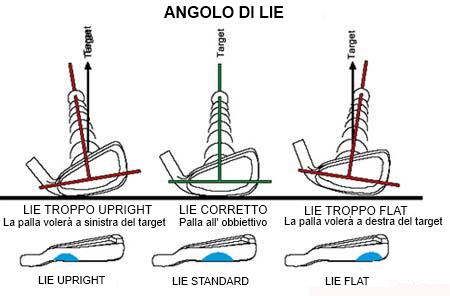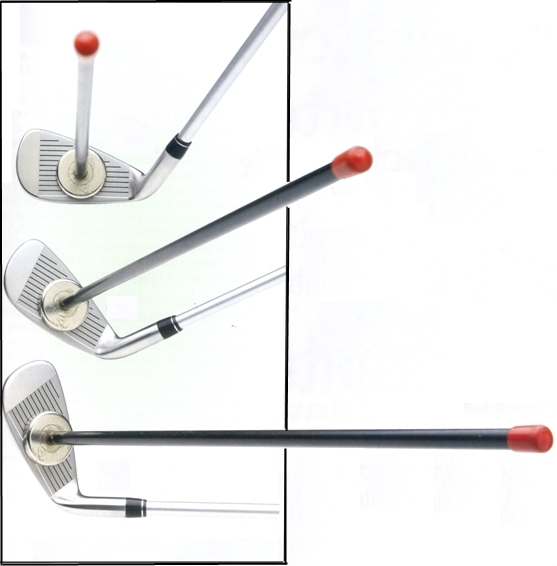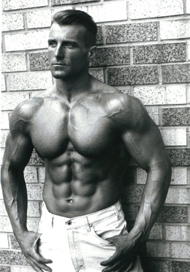Title: Health And Fitness Is Not A 12 Week Program
By line: By Tom Venuto, CSCS, NSCA-CPT
URL: www.BurnTheFat.com!
Word count: 2230 words
Not long ago, one of the members of my health club poked her head in my office for some advice. Linda was a 46 year old mother of two, and she had been a member for over a year. She had been working out sporadically, with (not surprisingly), sporadic results. On that particular day, she seemed to have enthusiasm and a twinkle in her eye that I hadn’t seen before.
“I want to enter a before and after fitness contest called the “12 week body transformation challenge.” I could win money and prizes and even get my picture in a magazine.”
“I want to lose THIS”, she continued, as she grabbed the body fat on her stomach. “Do you think it’s a good idea?”
Linda was not “obese,” she just had the typical “moderate roll” of abdominal body fat and a little bit of thigh/hip fat that many forty-something females struggle with.
“I think it’s a great idea,” I reassured her. “Competitions are great for motivation. When you have a deadline and you dangle a “carrot” like that prize money in front of you, it can keep you focused and more motivated than ever.”
Linda was eager and rarin’ to go. “Will you help me? I have this enrollment kit and I need my body fat measured.”
“No problem,” I said as I pulled out my Skyndex fat caliper, which is used to measure body fat percentage with a “pinch an inch” test.
When I finished, I read the results to her from the caliper display: “Twenty-seven percent. Room for improvement, but not bad; it’s about average for your age group.”
She wasn’t overjoyed at being ‘average’. “Yeah, but it’s not good either. Look at THIS,” she complained as again she grabbed a handful of stomach fat. “I want to get my body fat down to 19%, I heard that was a good body fat level.”
I agreed that 19% was a great goal, but told her it would take a lot of work because average fat loss is usually about a half a percent a week, or six percent in twelve weeks. Her goal, to lose eight percent in twelve weeks was ambitious.
She smiled and insisted, “I’m a hard worker. I can do it”
Indeed she was and indeed she did. She was a machine! Not only did she never miss a day in the gym, she trained HARD. Whenever I left my office and took a stroll through the gym, she was up there pumping away with everything she had. She told me her diet was the strictest it had ever been in her life and she didn’t cheat at all. I believed her, and it started to show, quickly.
Each week she popped into my office to have her body fat measured again, and each week it went down, down, down. Consistently she lost three quarters of a percent per week – well above the average rate of fat loss – and on two separate occasions, I recall her losing a full one percent body fat in just seven days.
Someone conservative might have said she was overtraining, but when we weighed her and calculated her lean body mass, we saw that she hadn’t lost ANY muscle – only fat. Her results were simply exceptional!
She was ecstatic, and needless to say, her success bred more success and she kept after it like a hungry tiger for the full twelve weeks.
On week twelve, day seven, she showed up in my office for her final weigh-in and body fat measurement. She was wearing a pair of formerly tight blue jeans and they were FALLING OFF her!
“Look, look, look,” she repeated giddily as she tugged at her waistband, which was now several inches too large.
As I took her body fat, I have to say, I was impressed. She hadn’t just lost a little fat, she was “RIPPED!”
During week twelve she dropped from 18% to 17% body fat, for a grand total of 10% body fat lost in three months. She surpassed her goal of 19% by two percent. I was now even more impressed, because not many people lose that much body fat in three months.
You should have seen her! She started jumping up and down for joy like she was on a pogo stick! She was beaming… grinning from ear to ear! She practically knocked me over as she jumped up and gave me a hug – “Thank you, thank you, thank you!”
“Don’t thank me,” I said, “You did it, I just measured your body fat.”
She thanked me again anyway and then said she had to go have her “after” pictures taken.
Then something very, very strange happened. She stopped coming to the gym. Her “disappearance” was so abrupt, I was worried and I called her. She never picked up, so I just left messages.
No return phone call.
It was about four months later when I finally saw Linda again. The giddy smile was gone, replaced with a sullen face, a droopy posture and a big sigh when I said hello and asked where she’d been.
“I stopped working out after the contest… and I didn’t even win.”
“You looked like a winner to me, no matter what place you came in” I insisted, “but why did you stop, you were doing so well!”
“I don’t know, I blew my diet and then just completely lost my motivation. Now look at me, my weight is right back where I started and I don’t even want to know my body fat.”
“Well, I’m glad to see you back in here again. Write down some new goals for yourself and remember to think long term too. Twelve week goals are important, but fitness isn’t 12 week program you know, it’s a lifestyle – you have to do it every day, for the rest of your life.”
She nodded her head and finished her workout, still with a defeated look on her face. Unfortunately, she never again come anywhere near the condition she achieved for that competition, and for the rest of the time she was a member at our club, she slipped right back into the sporadic on and off workout pattern.
Linda was not an isolated case. I’ve seen the same thing happen with countless men and women of all ages and fitness levels from beginners to competitive bodybuilders. In fact, it happens to millions of people who “go on” diets, lose a lot of weight, then quickly “go off” the diet and gain the weight right back.
What causes people to burn so brightly with enthusiasm and motivation and then burn out just as quickly? Why do so many people succeed brilliantly in the short term but fail 95 out of 100 times in the long term? Why do so many people reach their fitness goals but struggle to maintain them?
The answer is simple: Health and fitness is for life, not for “12 weeks.”
You can avoid the on and off, yo-yo cycle of fitness ups and downs. You can get in great shape and stay in great shape. You can even get in shape and keep getting in better and better shape year after year, but it’s going to take a very different philosophy than most people subscribe to. The seven tips below will guide you.
These guidelines are quite contrary to the quick fix philosophies prevailing in the weight loss and fitness world today. Applying them will take patience, discipline and dedication and they will put you in the minority. Just remember, the only thing worse than getting no results is getting great results and losing them.
1) Don’t “go on” diets. When you “go on” a diet, the underlying assumption is that at some point you have to “go off” it. This isn’t just semantics, it’s one of the primary reasons most diets fail. By definition, a “diet” is a temporary and often drastic change in your eating behaviors and/or a severe restriction of calories or food, which is ultimately, not maintainable. If you reach your goal, the diet is officially “over” and then you “go off” (returning to the way you used to eat). Health and fitness is not temporary; it’s not a “diet.” It’s something you do every day of your life. Unless you approach nutrition from a “habits” and “lifestyle” perspective, you’re doomed from the start.
2) Eat the same healthy foods consistently, all year round. Permanent fat loss is best achieved by eating mostly the same types of foods all year round. Naturally, you should include a wide variety of healthy foods so you get the full spectrum of nutrients you need, but there should be consistency, month in, month out. When you want to lose body fat, there’s no dramatic change necessary – you don’t need to eat totally different foods – it’s a simple matter of eating less of those same healthy foods and exercising more.
3) Have a plan for easing into maintenance. Let’s face it – sometimes a nutrition program needs to be more strict than usual. For example, peaking for a bodybuilding, figure, fitness or transformation challenge contest requires an extremely strict regimen that’s different than the rest of the year. As a rule, the stricter your nutrition program, the more you must plan ahead and the more time you must allow for a slow, disciplined transition into maintenance. Failure to plan for a gradual transition will almost always result in a huge binge and a very rapid, hard fall “off the wagon.”
4) Focus on changing daily behaviors and habits one or two at a time. Rather than making huge, multiple changes all at once, focus on changing one or two habits/behaviors at a time. Most psychologists agree that it takes about 21 days of consistent effort to replace an old bad habit with a new positive one. As you master each habit, and it becomes as ingrained into your daily life as brushing your teeth, then you simply move on to the next one. That would be at least 17 new habits per year. Can you imagine the impact that would have on your health and your life? This approach requires patience, but the results are a lot more permanent than if you try to change everything in one fell swoop. This is also the least intimidating way for a beginner to start making some health-improving changes to their lifestyle.
5) Make goal setting a lifelong habit. Goal setting is not a one-time event, it’s a process that never ends. For example, if you have a 12 week goal to lose 6% bodyfat, what are you going to do after you achieve it? Lose even more fat? Gain muscle? What’s next? On week 13, day 1, if you have no direction and no long term goal to keep you going, you’ll have nothing to keep you from slipping back into old patterns. Every time you achieve a short term goal (daily, weekly and 12 week goals), you must set another one. Having short term goals means that you are literally setting goals continuously and never stopping.
6) Allow a reasonable time frame to reach your goal. It’s important to set deadlines for your fitness and weight loss goals. It’s also important to set big, ambitious goals, but you must allow a reasonable time frame for achieving them. Time pressure is often the motivating force that helps people get in the best shape of their lives. But when the deadline is unrealistic for a particular goal (like 30 pounds in 30 days), then crash dieting or other extreme measures are often taken to get there before the bell. The more rapidly you lose weight, the more likely you are to lose muscle and the faster the weight will come right back on afterwards. Start sooner. Don’t wait until mid-May to think about looking good for summer.
7) Extend your time perspective. Successful people in every field always share one common character trait: Long term time perspective. Some of the most successful Japanese technology and manufacturing companies have 100 year and even 250-year business plans. If you want to be successful in maintaining high levels of fitness, you must set long term goals: One year, Ten years, Even fifty years! You also must consider what the long term consequences might be as a result of using any “radical” diet, training method or ergogenic aid. The people who had it but lost it are usually the ones who failed to think long term or acknowledge future consequences. It’s easy for a 21 year old to live only for today, and it may even seem ridiculous to set 25 year goals, but consider this: I’ve never met a 40 or 60 year old who didn’t care about his or her health and appearance, but I have met 40 or 60 year olds who regretted not caring 25 years ago.
Burn The Fat, Feed the Muscle (BFFM) is a fat loss program which acknowledges the simple truth that going “on diets,” entering “Fitness challenges” or competing in “Transformation contests” without having long term goals and a lifestyle attitude, is a recipe for failure. Don’t let yourself be part of the latest fitness dropout statistics: visit the Burn The Fat website for more details on how to change your lifestyle… and keep the change! www.BurnTheFat.com!
About the Author:
Tom Venuto is a lifetime natural bodybuilder, an NSCA-certified personal trainer (CPT), certified strength & conditioning specialist (CSCS), and author of the #1 best-selling e-book, “Burn the Fat, Feed The Muscle.” Tom has written more than 200 articles and has been featured in print magazines such as IRONMAN, Australian IRONMAN, Natural Bodybuilding, Muscular Development, Exercise for Men and Men’s Exercise, as well as on hundreds of websites worldwide. For information on Tom’s Fat Loss program, visit: www.BurnTheFat.com!
(CPT), certified strength & conditioning specialist (CSCS), and author of the #1 best-selling e-book, “Burn the Fat, Feed The Muscle.” Tom has written more than 200 articles and has been featured in print magazines such as IRONMAN, Australian IRONMAN, Natural Bodybuilding, Muscular Development, Exercise for Men and Men’s Exercise, as well as on hundreds of websites worldwide. For information on Tom’s Fat Loss program, visit: www.BurnTheFat.com!

















